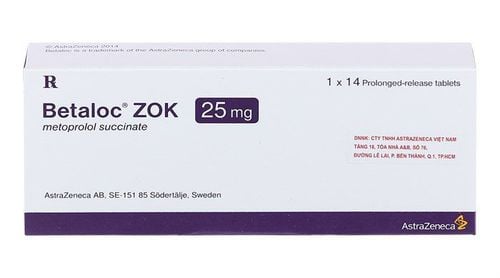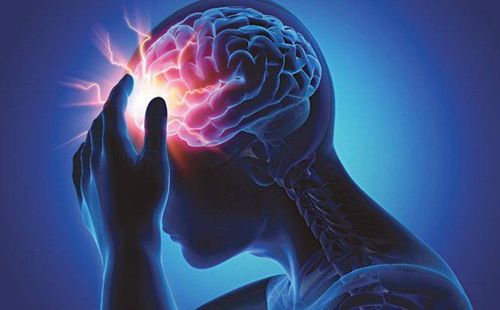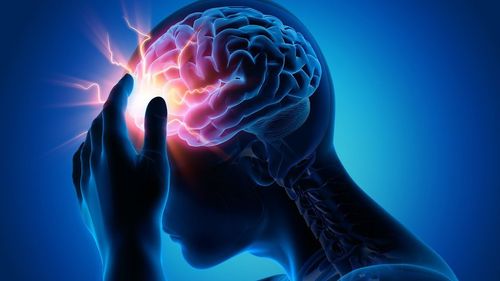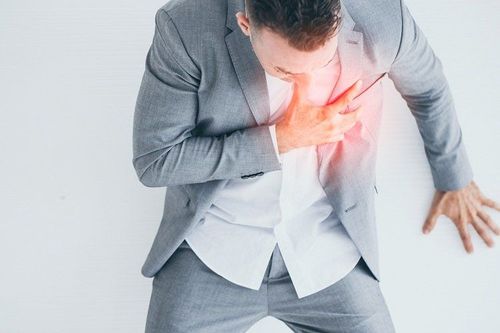This is an automatically translated article.
The article was professionally consulted by a neurosurgeon, Department of General Surgery, Vinmec Central Park International General Hospital.Cerebrovascular accident is the leading cause of death after cancer and cardiovascular disease. Patients can also experience severe post-stroke sequelae such as lifelong disability.
1. What is a cerebrovascular accident?
Cerebrovascular accident, commonly known as cerebral stroke, occurs often due to a ruptured or blocked blood vessel in the brain leading to many complications or even death.
Depending on the part of the brain that is damaged, patients with a cerebrovascular accident will experience different complications, in which the common complications are:
Paralysis of arms, legs, half or whole body, complications This can be corrected with physical therapy. Distorted mouth due to paralysis of facial muscles makes stroke patients difficult to communicate and eat. Loss of memory, poor memory. Inability to take care of yourself. Death Cerebrovascular accident is divided into two main types: cerebral infarction and cerebral parenchymal hemorrhage, subarachnoid hemorrhage.
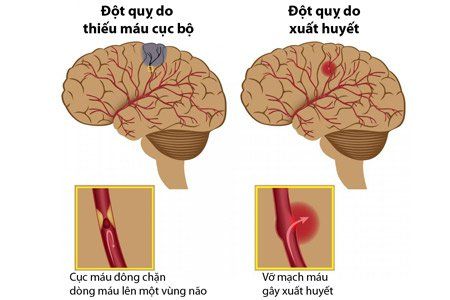
Tai biến mạch máu não được chia làm hai loại chính là nhồi máu não và xuất huyết não
2. Signs to recognize cerebrovascular accident
Cerebrovascular accident can cause many symptoms such as headache, loss of consciousness ... but we only need to remember at least 1 of the following 3 groups of signs, appearing suddenly, the risk of stroke is high. from 90-95%, it is a sign of F.A.S.T:
Facial paralysis (Face): The patient's mouth will be deviated to one side. Weakness, paralysis of arms (Arm) or legs: Patient cannot hold, grasp or walk with difficulty Language disorder (Speech): Difficulty speaking, unable to speak or unclear speech... If 3 signs are present at the same time With the above warning signs, the patient's risk is very high, so it is necessary to urgently call an ambulance and take the patient to a medical facility as quickly as possible to take advantage of the golden moment to save the patient's life.
3. Risk of cerebrovascular accident
3.1 Risk cannot be affected Age, mostly over 45 years old Gender (more common in men than women) Race Genetics These factors cannot be influenced but their presence places these populations into the high-risk group, so it is necessary to detect and address other risk factors that can be affected early.
3.2 Impactable risk factors Arterial hypertension: Hypertension is an important risk factor for all types of cerebrovascular accident. When blood pressure is high, it is easy to damage the endothelium of the blood vessels. Controlling diastolic and systolic hypertension will reduce cerebrovascular accidents. Diabetes: Diabetes causes systemic damage to the entire arterial system, including the arteries in the brain. Diabetes increases the incidence of stroke by 2-6.5 times, increases the mortality rate by 2 times and is a special risk factor for cardiovascular events and stroke. Heart diseases: Many heart diseases can increase the risk of cerebrovascular accidents such as atrial fibrillation, endocarditis, mitral stenosis, large-scale myocardial infarction, atrial septal defect, left atrium wall aneurysm... Hyperlipidemia: When the lipid content in the blood is too high, it is a favorable condition for lipids to "infiltrate" and settle in the blood vessel walls. This is the first stage of atherosclerotic plaque formation. Smoking, alcohol abuse: Tobacco reduces the concentration of HDL in the blood, damages the endothelial cells of the arteries, creating conditions for the development of atherosclerosis.

Hút thuốc lá có thể tạo điều kiện cho vữa xơ động mạch phát triển
Transient ischemic stroke: Transient ischemic attack manifests as short ischemic symptoms that resolve spontaneously within 1 hour. These attacks go away on their own without treatment. After a while, the attacks return. A transient ischemic attack is a warning sign of a true stroke risk. Therefore, people with transient ischemic attack need to quickly seek medical attention for preventive treatment. Past history of stroke: Patients with a previous stroke history are at increased risk of recurrence. Obesity: Obesity is a favorable factor contributing to high blood pressure, dyslipidemia and hyperglycemia. All of these factors combined increase the risk of cardiovascular disease. Brain Aneurysm: Brain aneurysm is a relatively common cause of hemorrhagic stroke in young adults. Aneurysms are very fragile, when rupture of an aneurysm in the brain causes bleeding in the subarachnoid space of the brain parenchyma. About 10% of patients with a ruptured brain aneurysm die before reaching the hospital. Aneurysms often develop silently, without symptoms. Warning signs are presented by sudden, severe headache, pain in the back of the neck, stiff neck... Brain arteriovenous malformation: Cerebral arteriovenous malformation is a congenital disease, forming a vascular plexus abnormality in the brain, connecting cerebral arteries and veins. In the malformation site, the malformed blood vessel has an abnormal shape and structure, which is easy to burst, causing bleeding in the brain parenchyma or the subarachnoid space. Most patients with cerebral arteriovenous malformation have a silent course. A small percentage have persistent headaches, epileptic seizures...
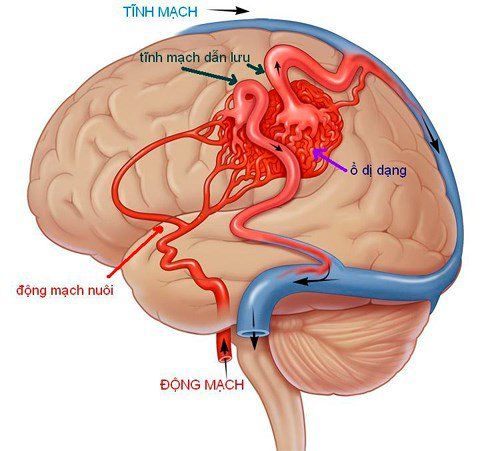
Dị dạng mạch não rất dễ bị vỡ ra gây chảy máu não
3.3 Other risk factors Influence of lifestyle habits: Improper diet, excessive physical activity, psychological stress, acute addictions. Coagulation: Coagulation factors are associated with overall cardiovascular disease rates, in a Wilhelmsen study an association between increased fibrinogen and an increased risk of ischemic stroke in men over 54 years of age. Homocysteine: This is a metabolic product of the amino acid methionine related to vitamin B6, vitamin B12 and folic acid. Use of Opioids and Its Derivatives: All abuses of drugs containing Cocaine, Heroin, Amphetamine, LSD, increase the risk of stroke. This event can occur immediately after the first use due to acute poisoning or occur due to chronic poisoning. Neurological clinical symptoms usually appear in the first 48 hours after taking the drug, complications can be cerebral ischemia or bleeding in the brain. Using oral contraceptives containing a lot of oestrogen: If the dose of estrogen is > 50 micrograms, there is a higher risk of ischemic stroke than low doses. The mechanism is due to coagulation disorders, increased platelet adhesion and activation of prothrombin-converting enzyme, causing prostacyclin synthesis disorder and endothelial inflammation of small and medium-sized blood vessels. Migraine: Migraine and multiple headaches can be a risk factor for stroke for both men and women, especially occurring before age 50. Accordingly, about 2-3% of ischemic strokes occur in patients with a history of migraine headaches. In patients younger than 45 years of age, approximately 15% of people with a stroke have a history of migraine or migraine aura. Sickle cell disease: People with sickle cell disease have an increased risk of stroke at a young age. Pregnant women: Although there are few cases, most are in women with hypertension and higher risk in the postpartum period. Depression: Some studies suggest that depression may be a cause of stroke. NSAIDS: ibuprofen and diclofenac may increase the risk of stroke, especially in patients with other stroke risk factors.
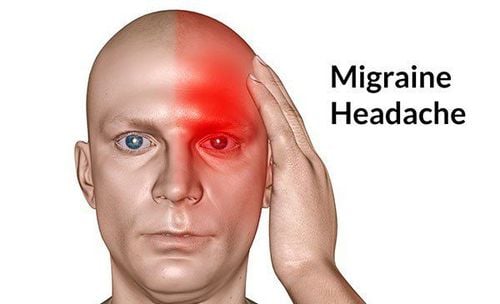
Migraine và đau đầu nhiều có thể là một yếu tố nguy cơ đột quỵ
4. Prevention of cerebrovascular accident
Treatment of stroke causes: Understanding the causes of cerebrovascular accident is a basis for preventing stroke. Therefore, people with diabetes; Hypertension; Heart-related diseaes; Dyslipidemia needs treatment to prevent complications. Avoid risk factors with positive lifestyle habits such as: Do not abuse alcohol. Do not smoke or use stimulants. Avoid obesity by exercising daily. Avoid excessive and prolonged nervous tension. Healthy diet, should have lots of vegetables and fruits; Limit eating too salty, too much animal fat. Periodic re-examination and treatment under the guidance of medical staff. Currently, Magnetic Resonance Imaging - MRI/MRA is considered a "golden" tool to screen for cerebrovascular accident, also known as cerebral stroke. MRI is used to check the condition of most organs in the body, especially valuable in detailed imaging of the brain or spinal nerves. Due to the good contrast and resolution, MRI images allow to detect abnormalities hidden behind bone layers that are difficult to recognize with other imaging methods. MRI can give more accurate results than X-ray techniques (except for DSA angiography) in diagnosing brain diseases, cardiovascular diseases, strokes,... Moreover, the process MRI scans do not cause side effects like X-rays or computed tomography (CT) scans.\
Vinmec International General Hospital currently owns a 3.0 Tesla MRI system equipped with state-of-the-art equipment by GE. Healthcare (USA) with high image quality, allows comprehensive assessment, does not miss the injury but reduces the time taken to take pictures. Silent technology helps to reduce noise, create comfort and reduce stress for the client during the shooting process, resulting in better image quality and shorter imaging time. With the state-of-the-art MRI system With the application of modern methods of cerebral vascular intervention, a team of experienced and well-trained neurologists and radiologists, Vinmec is a prestigious address for stroke risk screening and screening. reliable goods.
In the past time; Vinmec has successfully treated many cases of stroke in a timely manner, leaving no sequelae: saving the life of a patient suffering from 2 consecutive strokes; Responding to foreign female tourists to escape the "death door" of a stroke;...
Please dial HOTLINE for more information or register for an appointment HERE. Download MyVinmec app to make appointments faster and to manage your bookings easily.





